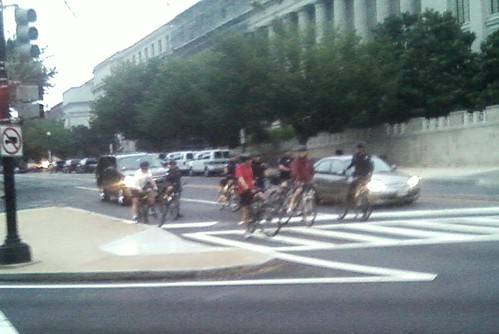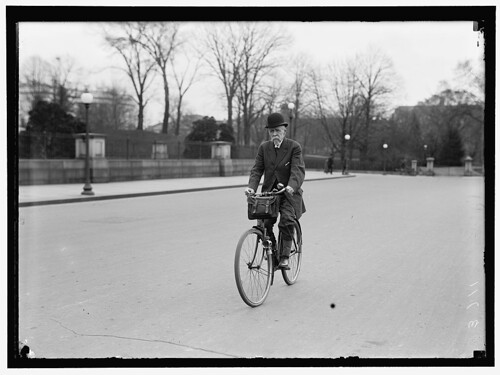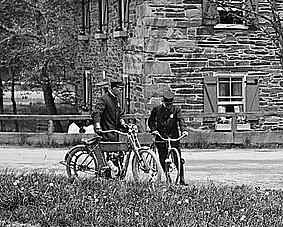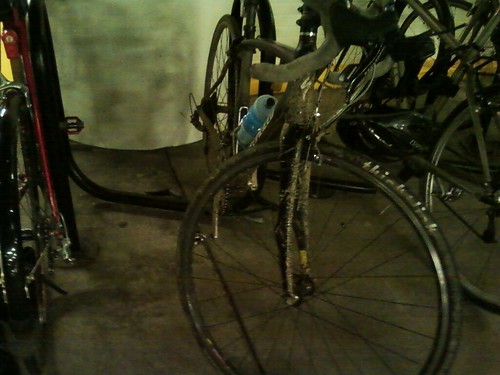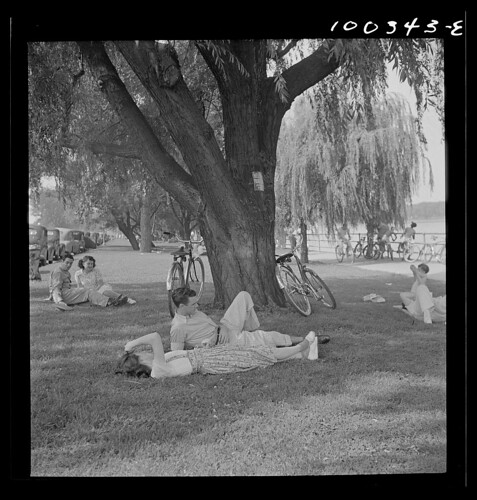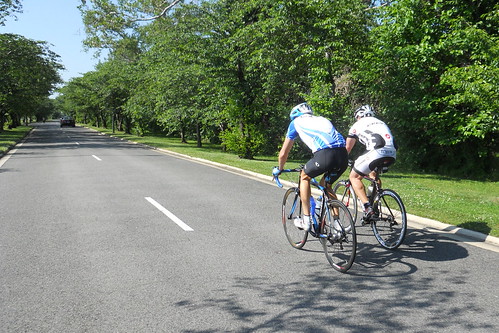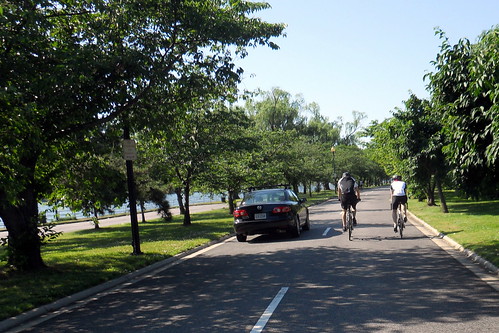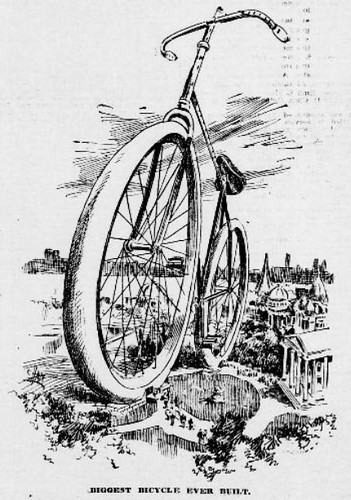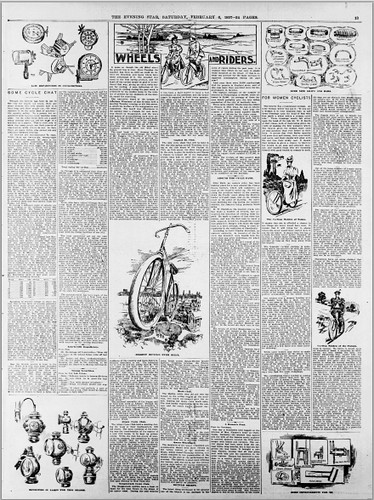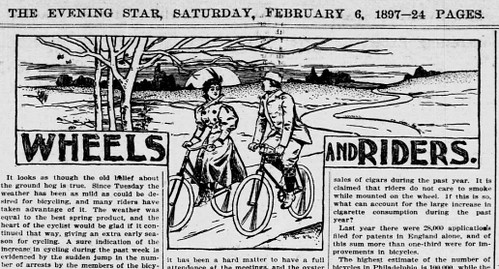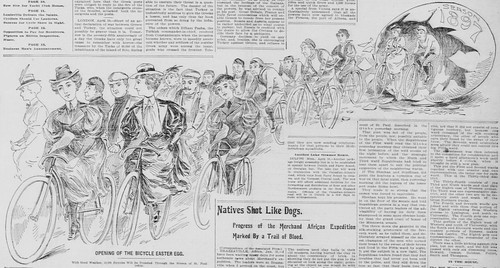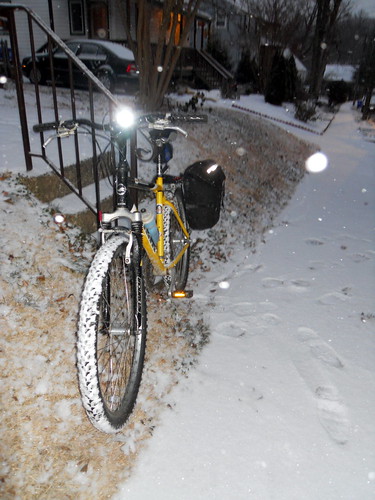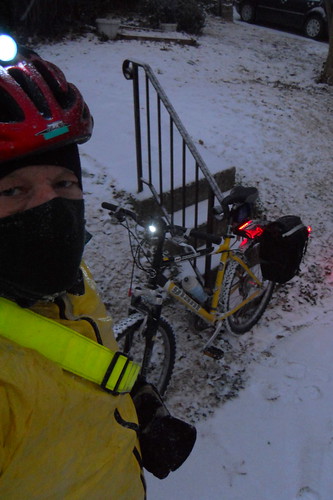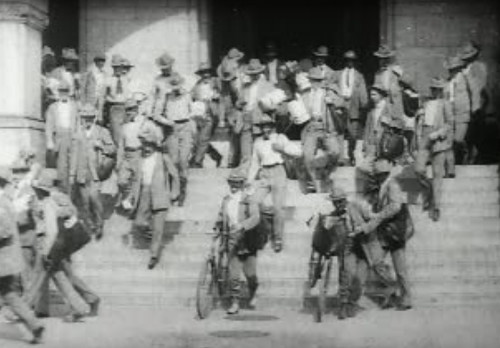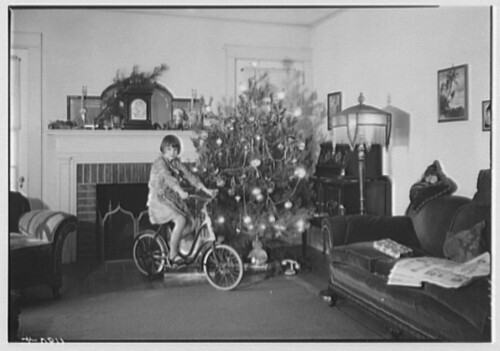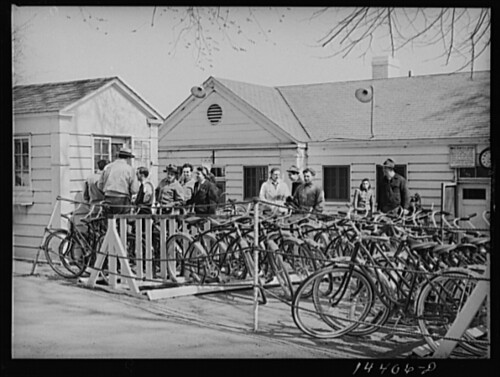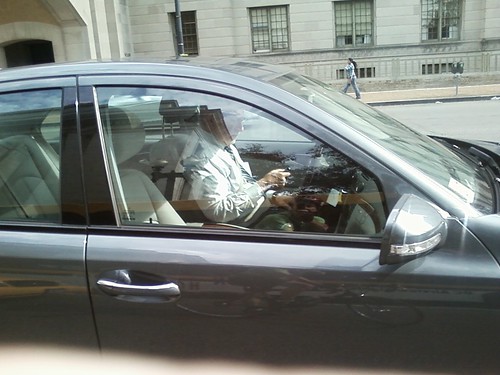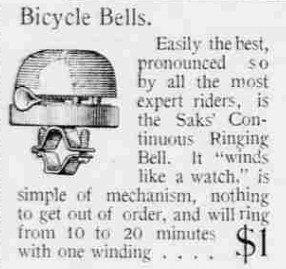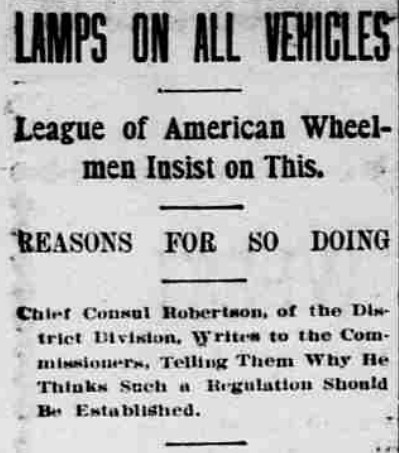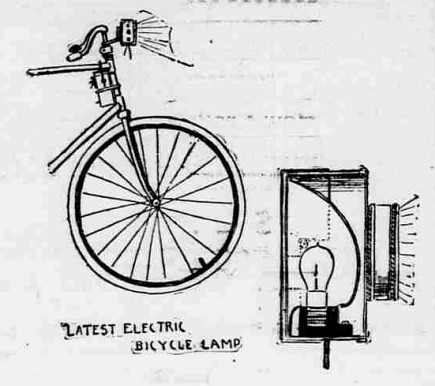This week has been pretty warm in the DC area - leaving my house to ride in at 6:30 it has already been 80 degrees (27 C) or higher and fairly humid. I consider these "two bottle" days since instead of just one bottle of Gatorade, I have two bottles, one of which I take frozen from the freezer - by the time I am half way to work, it is drinkable and I'll finish it before arriving.
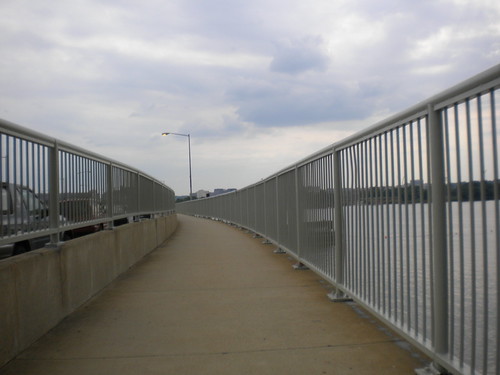 Taken a different day and of the other end of the bridge, this gives a sense the layout of the pedestrian area on the bridge
Taken a different day and of the other end of the bridge, this gives a sense the layout of the pedestrian area on the bridge
This morning I got to the 14th St Bridge that connects Arlington to Washington around 7 AM. Riding onto the bridge, I am on the fenced in pedestrian area that is for foot and bicycle traffic in both directions - it isn't terribly wide given how many cyclists use it these days. About 100 yards (meters) on to the bridge, I saw a backpack sitting on one side, more or less blocking bicycle traffic heading towards me. I have noticed that I don't necessarily transition from "bike thinking" that is mostly reactive and instinctive to other problem solving; anyway, a woman outbound stopped next to the backpack and said something and I shot by in the other direction - then after about ten yards, stopped, turned around, and went back.
"He jumped off the bridge," she said. I was stunned - what?!? This bridge may be 50-60 feet (20 meters) above the water, so as a suicide jumpoff location it isn't suitable, so to speak. And for that reason, one assumes, the fence keeping one from jumping off is fairly low (as shown in the photo). I had not seen this, but the woman had seen some guy who put down his backpack and promptly climbed up and jumped over, just as I approached from the other direction. (How I didn't see this, I still don't understand.) Sitting next to his backpack was his wallet, almost ready to slip over the edge under the rail into the Potomac.
We look over - we see nothing. No guy. So, I mean, what is one to do? A guy drops his stuff and jumps off a bridge, so you call 911. So I did. The 911 operator and I did not have a terribly successful conversation - she seemed amazingly unaware of how the 14 St bridges (there are five of them, including rail bridges) are laid out. Eventually she said that (a) she was sending the police, even though by now we could see the guy, happily swimming (remember, is was quite hot out) not below us but off to one side and studiously ignoring us, above, yelling at him, and (b) that I could leave this location and didn't need to wait for the police.
So I continued on my way to work. The woman, for whatever reason and I have no idea how long, stayed. I also don't know if the police really showed up, or what else happened.
I don't know what my lesson-learned from this bizarre experience was. I mean, sure it was hot, so taking a swim in the Potomac may be a semi-sensible thing to do, but leaping off a bridge in rush hour
and leaving all that stuff behind where it isn't exactly possible to keep track of it? So my guessing he just wanted to cool off would be a little counter-intuitive. I think.
I ride by a cyclist who is stopped along the trail on my commute, I ask, "got what you need?" I have given away a couple of inner tubes and pumped up a few tires, and of course encountered any number of situations where I could be no help whatsoever (since I only care so many tools in my little tool bag). Hmm.
